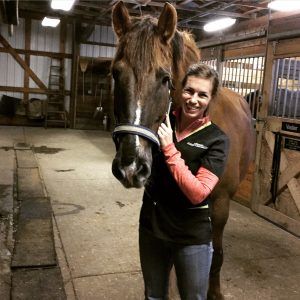
Normally I like to write about things that don’t necessarily directly pertain to chiropractic. However, this post will be a bit different. Lately I’ve had multiple patients come to me struggling with incontinence issues. These are animals of all types, ages, and environments. Some have had problems for years, others have had them for only a few months. Regardless of how unique each case may seem, they were all told nothing could be done for their pets and they should look into options such as surgery, drugs, diapers, or euthanasia.
That’s a pretty heavy set of possibilities for pet owners. Fortunately, several of these people decided to take matters into their own hands and research other possible therapies. There are several alternative options for incontinence, but I will focus on chiropractic today.
Incontinence in animals, the nervous system’s role
The nervous system controls every system in the body and is composed of two main parts. The central nervous system contains the brain and the spinal cord and acts like a control center. Extending from the spinal cord are the nerves that comprise the peripheral nervous system. The role of the brain and spinal cord is to receive input from the body and make decisions on what to do. Think of it like the thermostat in your house. When the temperature rises above its setting, the AC kicks in to cool things. The central nervous system is like the thermostat.
The brain and spinal cord need information to be effective. That is where the peripheral nervous system comes into play. Nerves extend from the spinal cord to every system in the body. These nerves act like highways transmitting information from the organs of the body to the central system for processing. After the information is processed, directions are sent back via the nerve highways to the body.
Does the nervous system control the bladder? It certainly plays a large role.
How can chiropractic care help?
Chiropractors are trained to assess an animal’s body for biomechanical abnormalities called structural shifts of the spine. When areas of the spine aren’t moving well, it leads to inflammation and tension on local nerves. These nerves are responsible for transmitting information to and from the control centers in the spinal cord and brain. By correcting structural shifts of the spine, we reduce local inflammation and tension on the nerve highway in the body.
The bladder and bowel are regulated by a number of different factors including the nervous system. There are several nerves that direct the bowel and bladder to constrict and/or relax. If these nerves are interfered with then we may see problems with the system it controls. This is what happens with urinary incontinence related to dysfunction of the spine. As a matter of fact, there is a research paper published on chiropractic and its potential role in urinary incontinence that focuses on these mechanisms.
What causes structural dysfunction of the spine?
Sometimes a trauma as simple as an animal taking a tumble onto their hind end is the culprit. Other times it comes from years and years of repetitive tasks aggravating the areas of the spine associated with bladder function. Regardless of how it starts, there is hope for any animal suffering from incontinence. If a structural abnormality is present then it can be corrected. Once corrected over a few visits we can evaluate the pet and see if there’s any improvement. One of the nice things about animal chiropractic is that typically animals respond within 3 visits if they are going to, so there’s no need for a lengthy treatment plan.
If your pet suffers from urinary incontinence and nothing else helps, it’s certainly worth trying animal chiropractic care. When searching for an animal chiropractor it’s best to search for someone board certified with the American Veterinary Chiropractic Association or the International Veterinary Chiropractic Association. If a practitioner has this certification you can trust that they’ve been through a rigorous program and are trained appropriately to work with your pet.

